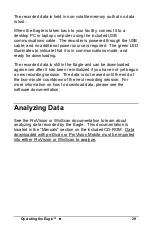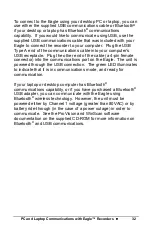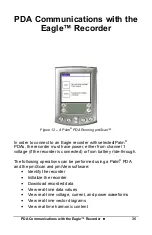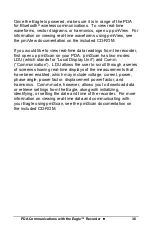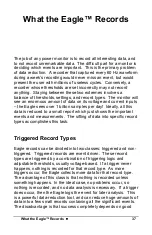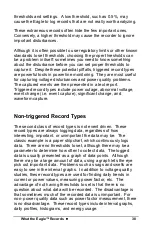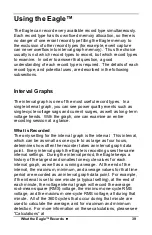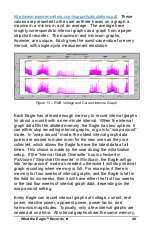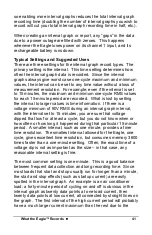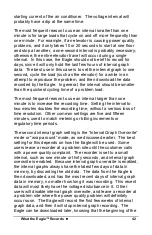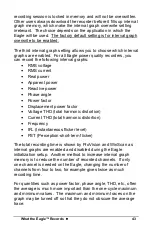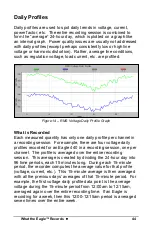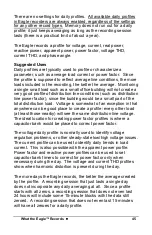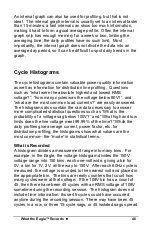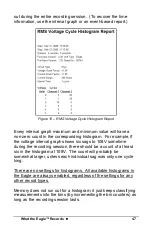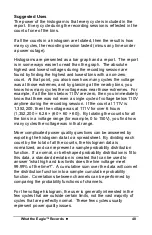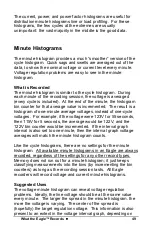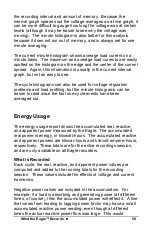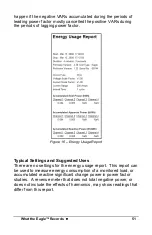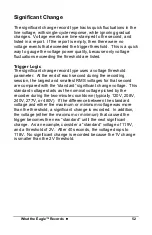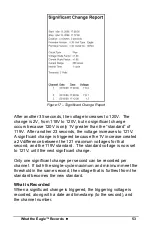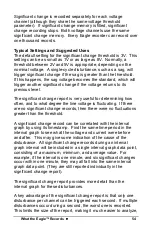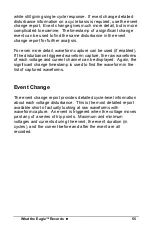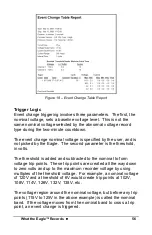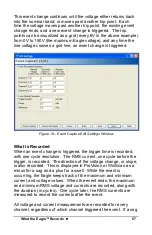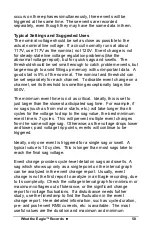
What the Eagle™ Records
••••
43
recording session is locked in memory and will not be overwritten.
Other users always download the recorder before it fills up interval
graph memory, which make the interval graph overwrite setting
irrelevant. The choice depends on the application in which the
Eagle will be used. The factory default setting is for interval graph
overwrite to be enabled.
The third interval graph setting allows you to choose which interval
graphs are enabled. For all Eagle power quality recorders, you
can record the following interval graphs:
•
RMS voltage
•
RMS current
•
Real power
•
Apparent power
•
Reactive power
•
Phase angle
•
Power factor
•
Displacement power factor
•
Voltage THD (total harmonic distortion)
•
Current THD (total harmonic distortion)
•
Frequency
•
IFL (Instantaneous flicker level)
•
PST (Perception-short-term flicker)
The total recording time is shown by ProVision and WinScan as
interval graphs are enabled and disabled during the Eagle
initialization setup. Another method to increase interval graph
memory is to reduce the number of recorded channels. If only
one channel is needed on the Eagle, changing the number of
channels from four to two, for example gives twice as much
recording time.
For quantities such as power factor, phase angle, THD, etc., often
the average is much more important than the one-cycle maximum
and minimum values. The maximum and minimum traces on the
graph may be turned off so that they do not obscure the average
trace.

